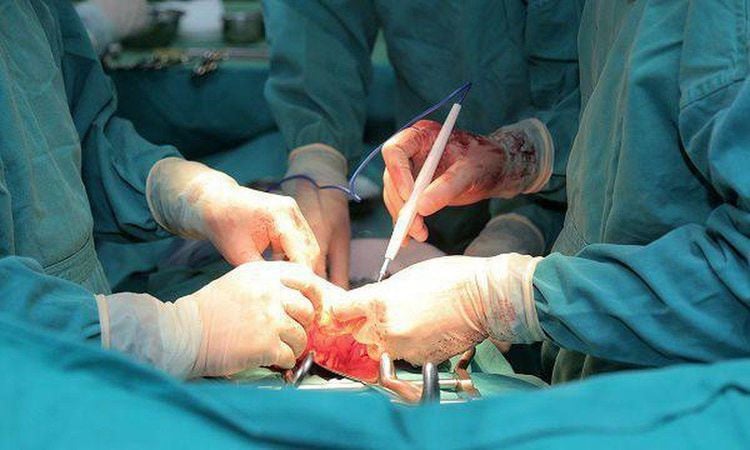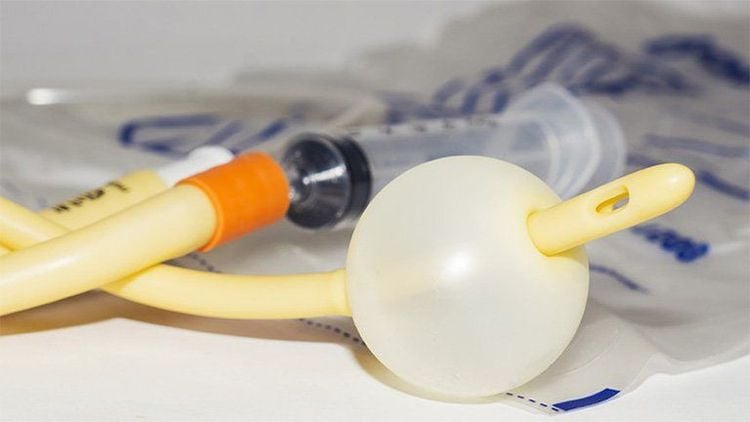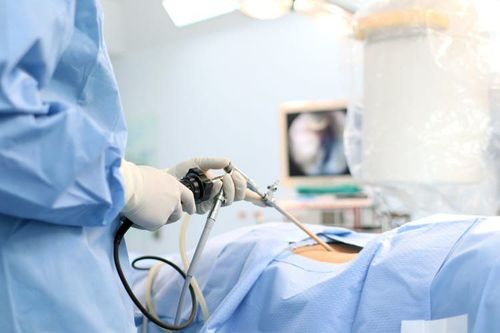This is an automatically translated article.
Deformity and spondylolisthesis is a congenital problem that affects only girls. This malformation can be detected as soon as the baby is born when it is observed that the rectum, urethra and vagina cannot separate into separate tubes but empty into a single hole. Therefore, the treatment of malformations with scleroderma should be indicated early with surgical measures in the first months of life of the child.
1. What is a malformation of a slime drive?
Focal malformations are a set of defects that occur during fetal development in the abdominal and pelvic structures. This malformation has many variations but the defects are most commonly characterized by the fusion of the rectum, genital tract (vagina), and urinary tract (urethra) into a common exit from the body.
In other words, if in a normal female body, the rectum, genital tract and urinary tract will all have their own exit. In girls with viscous malformations, all three lines will have only one exit from the body, merging together to form a tube. Even so, the upper organs such as the ovaries and fallopian tubes are fortunately usually unaffected.

Dị tật còn ổ nhớp ở bé gái
2. Signs that the child has a malformation and has a slimy socket
There are many variations of the malformation of the slime cavity. In each case, these defects manifest as follows:
Incomplete anus: The anus is not fully formed or does not have an opening to the outside of the body. Vaginal hypoplasia or no vagina: The vaginal canal of a young child, with a cap, or not at all. Developmental defects in other female reproductive organs such as the uterus, fallopian tubes, or ovaries. Changes in the degree of development of the bladder, rectum and also the lower abdominal wall, pelvic floor. There were other malformations of the kidneys, pelvis, and spinal cord.
3. How to diagnose a malformation with a slime cavity?
Some babies with malformations with bulging foci will be diagnosed on prenatal ultrasound. Meanwhile, most cases are detected only by physical examination after the baby is born.
However, to better investigate the internal abdominal and pelvic anatomical structures as well as related malformations, the doctor may need some additional imaging evaluation tools such as ultrasound, magnetic resonance imaging , endoscopy of the vagina, bladder and rectum. It is these means that will contribute to the orientation and planning of future surgical interventions for children.

Trẻ được chẩn đoán dị tật từ khi còn ở trong bụng mẹ
4. Consider how to approach the treatment of malformations with a slime cavity?
Similar to other urogenital malformations in neonates, for malformations with cysts, surgical correction is always indicated.
Accordingly, surgical treatment of externally exposed slime should be performed in different stages. The first is the separation of the urinary tract and the vagina. Next is the colon-anal reconstruction phase. A small number of pediatric patients may need additional urological repairs later on but still in childhood.
Because this is an infectious surgery, all pediatric patients before surgery need antibiotic prophylaxis for urinary tract infections.
5. How is the surgical treatment of an exposed sclerae performed?
In general, surgical treatment of externally exposed fossa is still a technical challenge to ensure both structural integrity and physiological function of the child's urine as well as the need for sexual activity. when children reach adulthood. Because of these complexities, surgical treatment of exposed fossa is often performed in specialized centers by pediatric surgeons specializing in general surgery and urology.
The goal of surgical treatment is to achieve intestinal control, urinary control and normal sexual function; while preserving kidney function as well as internal organs. Prognostic factors for surgical success include pelvic and spinal integrity, quality of the sphincter muscles, and length of the common canal and urethra.

Phẫu thuật điều trị còn ổ nhớp lộ ngoài
Of these, the lengths of the common canal and the urethra, i.e., from the common canal to the bladder neck, are reproducible landmarks and define complex cases. Patients with a common canal shorter than 3 cm are reconstructive and highly viable for most pediatric surgeons. Correction of the defect can be performed locally at the perineum without affecting the abdominal wall. At this point, the rectum will be edited first. The vagina and urinary tract are then reconstructed together with the goal of ensuring that both structures reach the perineum in two separate passages.
Conversely, if the patient has a common canal longer than 3 cm, the urethra is shorter than 1.5 cm, or both, these factors will be classified as anomalies requiring complex reconstruction. Correction at this time often requires laparoscopic or laparotomy.
Normally, the vagina and urinary tract must be separated to achieve the required length and then the urethra must be reconstructed. Separating the urethra from the vagina is a technically demanding job because of the risk of a urethral fistula in the future. In addition, in some operations, such as urethral anatomical reconstruction, rectal tubular reconstruction, surgeons need to use spacers, autologous and foreign grafts as a patch. biology, both to improve the structure and reduce the rate of complications later.
6. Notes when caring for children after surgery with malformations with sticky sockets
Before the intervention, the child will be placed a Foley catheter to drain urine from the bladder out without going through the urethra. After the surgery is over, the catheter will remain in place for 14 to 28 days afterward to ensure good healing.
If the rectal canal reconstruction requires the use of a small bowel segment as a graft, the child should be given parenteral nutrition for the first week until intestinal function is restored. In contrast, in infants requiring only local intervention without interference with the rest of the gastrointestinal tract, the infant can be fed by mouth like a normal infant immediately after surgery.

Ống thông Foley được đặt cho trẻ trước khi phẫu thuật
Function of the anus can be relatively complete 2 to 4 weeks after surgery provided the pelvic floor muscles heal well. However, there is a risk of progressive scarring that causes anal stricture. Therefore, after discharge from the hospital, the child should be included in an anal function monitoring program. At this point, the child's anus needs to be dilated twice daily and the size of the dilator will be increased every week until the final size goal is reached depending on the age of the patient.
In addition, similar to other surgical repair of urogenital birth defects, girls after surgery with malformations still have a risk of complications such as ureteral obstruction due to strictures, fistulas. urethra, defecation or urinary incontinence... Therefore, parents need to be instructed on how to monitor suspicious signs to take their child to an early examination and consider second-stage repair surgery. In addition, when entering adulthood, the ability to have sexual activity in people with a history of surgery for malformations and cysts is sometimes limited and requires further consultation with a urologist.
In summary, malformation surgery is generally a complex surgical repair that delineates separate exit routes for the urethra, vagina, and rectum. This information is what parents need to know in order to guide their child's intervention early as well as how to follow up after surgery, helping children develop confidently like peers.
Recommended video:
Fetal screening - A healthy baby is born
MORE:
Learn about birth defects in babies Birth defect screening tests Importance of fetal ultrasound













